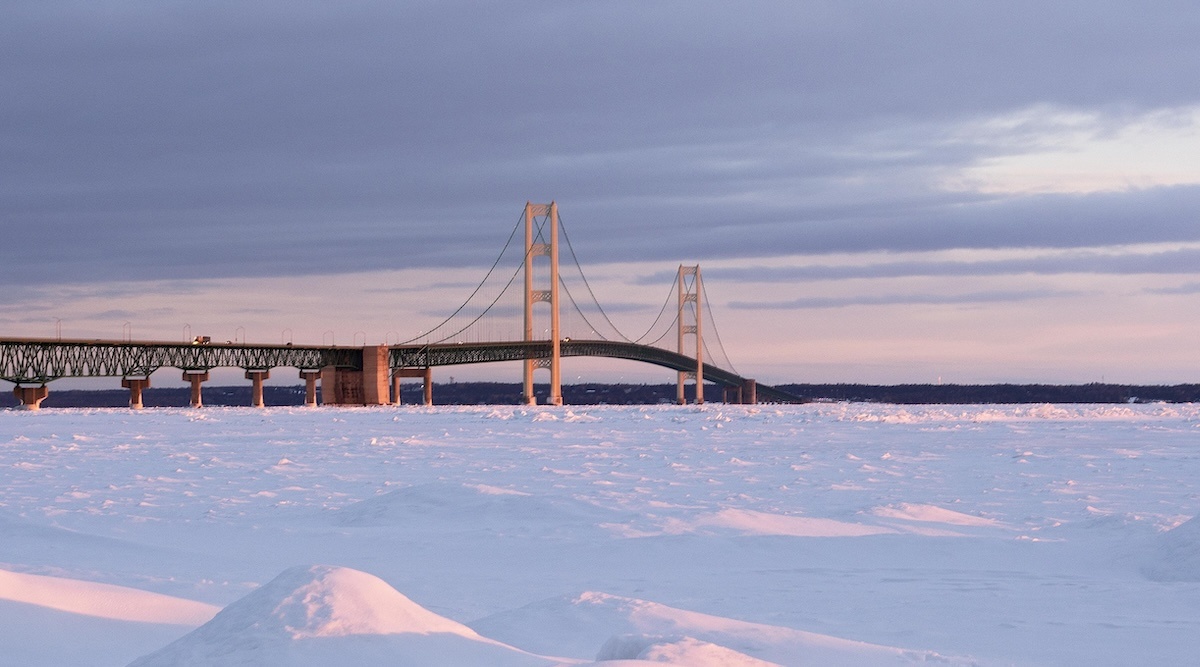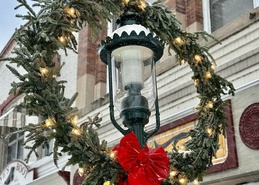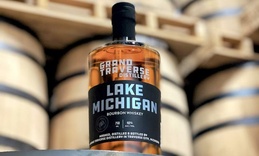
The Third Coast: America's Great Lakes Shoreline
Photographer David Zurick on the connection between people and place
By Anna Faller | Aug. 16, 2025
People leave a mark on the places we’ve been, whether that’s buildings and structures that might stand for centuries, or something as small and insignificant as a footprint in the Lake Michigan sand. It’s all those little imprints, though, that eventually form a place’s identity.
In his newest book, a photo collection entitled The Third Coast: America’s Great Lakes Shoreline, award-winning photographer David Zurick explores the locations, culture, and history that define the Great Lakes region—from the tulips of Holland to Sleeping Bear Dunes to the Straits of Mackinac and beyond.
“I photograph cultural landscapes because I see them as mirrors that hold the history of humankind in that place,” Zurick says. “In that way, these landscapes tell a story about the people who live there. That’s what I’m getting at.”
Home-State Inspiration
A graduate of the University of Hawaii and East-West Center in Honolulu, Zurick’s own story begins more than three decades ago in his first life teaching college geography. The focus of that work, however, slowly began to evolve, he says, once he started exploring and incorporating photography as a tool for class instruction.
“I was using photography along with my academics, and eventually, I started to use [it] as a means of communicating,” Zurick explains. “It was like a visual language for me, as opposed to an academic jargon, and as I got more into photography, I started learning how to make images.”
All it took was one bite from the snapshot bug to hook Zurick on full-time photography. Since then, he’s spent the last two decades behind a camera lens, in which time he’s published more than 12 books—including the award-winning Illustrated Atlas of the Himalaya (2006) and Morning Coffee at the Goldfish Pond: Seeing a World in the Garden (2017)—and earned countless accolades.
When COVID struck in 2020, Zurick was forced back to his home-state of Michigan, where he unexpectedly found himself searching for a new artistic subject.
“I still wanted to do something creatively with my photography,” he notes. “My internal compass took me north to where I grew up, and as I started taking photographs, it dawned on me what a great place this was to center for a couple of years.”
Four Season, Five Lakes
The result of that endeavor is Zurick’s newest book, The Third Coast: America’s Great Lakes Shoreline. Compiled over about five years, this collection of uniquely Midwestern photographs, which also features a forward written by acclaimed Michigan author Jerry Dennis, encapsulates the singular beauty that defines the Great Lakes throughout the year.
Structurally, the book is divided into five sections, each representing a lake and a season with a bonus “connecting waterways” category, which progress chronologically (winter, then spring, etc.) as readers move from cover to cover.
As for the subjects contained in each chapter? Per Zurick, he simply picked the places he “wanted to be” and let his eye do the rest. The finished collection comprises images from several states, including Pennsylvania, New York, and Ohio, as well as both of Michigan’s peninsulas, from Whitefish Point down to Lexington and Sanilac counties of the southern “thumb.”
“I began on Lake Huron, because I’d gone up to visit my family,” Zurick says. “That’s also the shoreline of my youth, and autumn has this reminiscent atmosphere to it. That’s how those linked up in my thinking at the time, and how I [decided] to do the lakes as different seasons.”
From there, he says, the icy peaks of Lake Superior made for the clear winter pick; meanwhile, he went for a bustling “summer-in-the-city” theme for Lakes Erie and Ontario.
This left Lake Michigan for spring, which Zurick admits he purposely timed to coincide with the blooming tulips and cherry blossoms, and with it, a host of delightfully-familiar spots from Ludington up to Point Betsie Lighthouse.
People and Portraiture
Zurick is quick to rebuke the title of “landscape photographer” and underscores that he had more in mind for the book than just a Great Lakes “inventory.” Instead, he’s crafted these images to illustrate how human impact has, and continues to, shape the region, for better and for worse.
“We give these places character,” he adds. “That’s what I’m interested in photographing.”
A striking example of this arrives about halfway through the Lake Michigan section, with a bi-colored shot of the Sleeping Bear Dunes intersected by an ant-sized man. As Zurick points out, the shot is divided into the natural elements of sand and sky—a geometric “rule of thirds” principle that’s at play throughout the book—that would otherwise be crisp and clean, if not for the single human imprint.
The theme also speaks to Dennis’ point in the forward about loss of connection: “The greatest threat to the Great Lakes is anything that causes us to lose hope […] is anything that makes us prefer to stay inside our houses,” he writes.
That’s not to say that Zurick’s images are entirely bereft of people. In fact, much of his photography from the Himalayas features portraiture, which was another artistic throughline he aimed to implement in The Third Coast. “Portraiture” here, though, means people-plus-place, which we see in images like “Laura and Colin” or “Paul and Elsa,” taken on Little Traverse Bay and the Platte River Campground, respectively. In each case, the intent was to remind viewers that the Great Lakes are also defined, and even perpetuated, by the people that live there.
Scale, Majesty, and Diversity
On the flip side of that photo coin, Zurick also peppered the book with shots that evoke a sense of place minus people: a field of trilliums or an endless blanket of cherry blossoms on the Leelanau Peninsula—“I wanted to get totally enveloped those blossoms!” he says—or the stark comparison of three silver birches pitted against the skyline.
“I was really drawn to the simplicity of [those images]. There’s a spaciousness I enjoy about them. They just take you, and you can kind of breathe easier,” says Zurick.
Still other works in book’s collection are there purely for a little fun, like the double-layout depicting the iconic Miss Uniroyal statue (aka, “Jolene”) outside of Olean’s in Northport or the trio of kitschy pirates at a mini-golf course in Emmet County. For Zurick, these types of shots strike visual interest for their irony or the curiosity they spark.
In fact, if readers take anything from The Third Coast, Zurick hopes it’s a new understanding of and appreciation for the richness the Great Lakes contain, both in terms of topography and local tradition.
“It’s an incredibly diverse landscape, and [many of us] only know a little piece of it,” he says.
“[I wanted] to present the scale, the majesty, and the diversity of these Great Lakes for folks who aren’t from the region,” Zurick adds. “They might not know about the Great Lakes at all, and [they don’t know] what they’re missing!”
Photos: Copyright David Zurick
Trending

Three Holiday Shopping Sprees (and Trees!)
Head north of the 45th parallel this weekend for three chances to get all your holiday shopping done weeks before you’… Read More >>
Writing a Heartfelt Card
They say that letter writing is a lost art, but Thrive 45° Young Professionals Group and the Petoskey Chamber are hoping… Read More >>
Distillery Ups and Downs of 2025: Craft Spirits Industry Is Shifting, but Not Shaken
In late October, scores of people bellied up to the bar to sample a variety of spirits made at Northern Latitudes’ new… Read More >>


